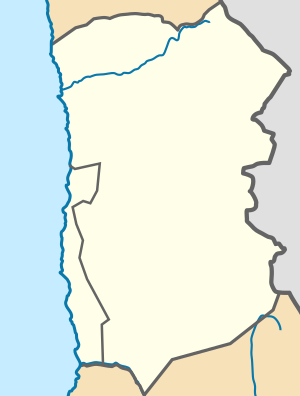Huatacondo facts for kids
Quick facts for kids
Huatacondo
|
|
|---|---|
| Huatacondo | |
 |
|
| Country | Chile |
| Region | Tarapacá |
| Province | Tamarugal |
| Time zone | UTC-4 |
Huatacondo is a small town in Chile. It is located in the Tarapacá Region, about 230 kilometers (143 miles) southeast of Iquique. The town's name comes from the Quechua language. It means "where the condor has its nest." Huatacondo is known for its interesting past and its modern way of getting electricity.
Contents
History
A Town with Ancient Roots
Huatacondo is located near an old Inca road system. This was a huge network of roads built by the ancient Inca Empire. It connected important places like Arica and Quillagua. The town is also in the middle of a large flat area called the Pampa del Tamarugal.
The people who live in Huatacondo today have a mixed heritage. Their ancestors include both native Indigenous people and early Spanish settlers. This mix happened during the time of Spanish colonization.
Modern Power for the Town
In September 2010, Huatacondo became a special place in Chile. It was the first community in the country to create its own electricity. They did this using a smart system called an isolated microgrid. This system gets its power from a wind turbine and solar panels. This means Huatacondo uses clean, renewable energy.
Economy
Farming Through the Years
In the past, when saltpeter was an important product in Chile, Huatacondo produced fruits and flowers. Today, the town has changed a lot. It has more modern buildings and better roads. The area also has a semi-tropical climate and plants.
Currently, people in Huatacondo grow fruits and vegetables during the summer. They still use traditional Incan terraces. These are special steps built into hillsides for farming. This method helps them grow food even on sloped land.
Ancient Art and Animal Tracks
Close to Huatacondo, you can find the petroglyphs of Tamentica. Petroglyphs are ancient drawings carved into rocks. These carvings tell stories from long ago. There are also areas nearby where scientists have found tracks of prehistoric animals. These tracks give us clues about the creatures that lived there many years ago.
See also
 In Spanish: Huatacondo para niños
In Spanish: Huatacondo para niños

